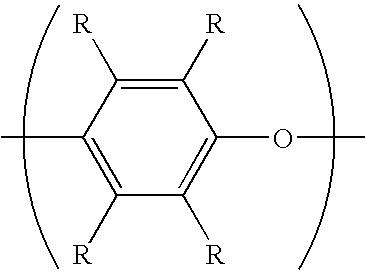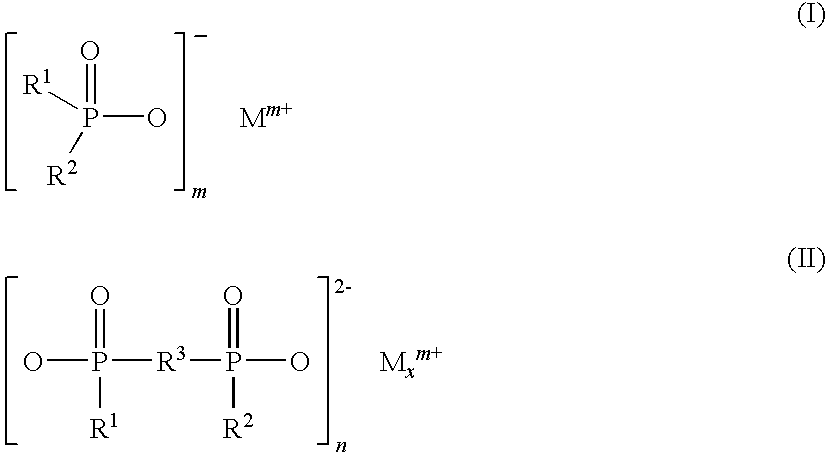Heat-resistant resin composition
a technology of resin composition and heat resistance, which is applied in the direction of synthetic resin layered products, chemistry apparatus and processes, transportation and packaging, etc., can solve the problems of insufficient weld strength, difficult to maintain a balance between sufficient fluidity and impact resistance, and extra care of fender installation methods, etc., to achieve excellent heat resistance, impact strength, and low water absorption.
- Summary
- Abstract
- Description
- Claims
- Application Information
AI Technical Summary
Benefits of technology
Problems solved by technology
Method used
Image
Examples
examples
[0221]The present invention will now be described in more detail by the following examples and comparative examples. However, the present invention is in no way limited to these examples and comparative examples.
(Used Raw Materials)
1. Production of the Aromatic Polyamide (Polyamide 9T)
[0222]Following the method described in the Examples of JP-A-2000-103847, terephthalic acid as the dicarboxylic acid component, 1,9-nonamethylenediamine and 2-methyl-1,8-octamethylenediamine as the diamine component, and octylamine or benzoic acid as the terminal-blocking agent, sodium hypophosphite monohydrate as the polymerization catalyst and distilled water were charged into an autoclave, which was then closed (the moisture content in the system was 25% by weight). After the autoclave was thoroughly purged with nitrogen, the mixture was stirred for 2 hours and the internal temperature was increased to 260° C. In that condition, the compounds were reacted for 1 hour. The internal pressure at this st...
examples 1-4
Present Invention
[0249]Using a twin screw extruder with one feed opening in the upstream and one feed opening in the middle of the extruder (ZSK-25, manufactured by Coperion, Germany), and with the temperature from the upstream feed opening to the middle feed opening set to 320° C. and the temperature from the middle feed opening to die set to 280° C., 40 parts by mass of PPE-1, 10 parts by mass of SEBS-1 and 0.4 parts by mass of MAH were fed from the upstream feed opening at a screw rotation speed of 300 rpm and an output of extruding of 15 kg / h. The mixture was melt-kneaded, and then 50 parts by mass of PA9T and 0.05 parts by mass of Talc-1 were fed thereto from the middle feed opening. This mixture was melt-kneaded, extruded and cut to produce a resin composition pellet. It is noted that the SEBS and MAH were used as a mixture mixed by a tumbler, and that the PPE was fed into the extruder using a separate feed apparatus from these materials. Further, the PA9T and the Talc-1 were ...
examples 5 and 6
Comparison
[0264]Extrusion, molding and evaluation were carried out in the same manner as Example 1. The polyamide 9T terminal amino group concentration was beyond the scope defined in the claims of the present invention. The obtained results are shown in Table 1.
PUM
| Property | Measurement | Unit |
|---|---|---|
| particle size | aaaaa | aaaaa |
| thickness | aaaaa | aaaaa |
| light transmittance | aaaaa | aaaaa |
Abstract
Description
Claims
Application Information
 Login to View More
Login to View More - R&D
- Intellectual Property
- Life Sciences
- Materials
- Tech Scout
- Unparalleled Data Quality
- Higher Quality Content
- 60% Fewer Hallucinations
Browse by: Latest US Patents, China's latest patents, Technical Efficacy Thesaurus, Application Domain, Technology Topic, Popular Technical Reports.
© 2025 PatSnap. All rights reserved.Legal|Privacy policy|Modern Slavery Act Transparency Statement|Sitemap|About US| Contact US: help@patsnap.com



